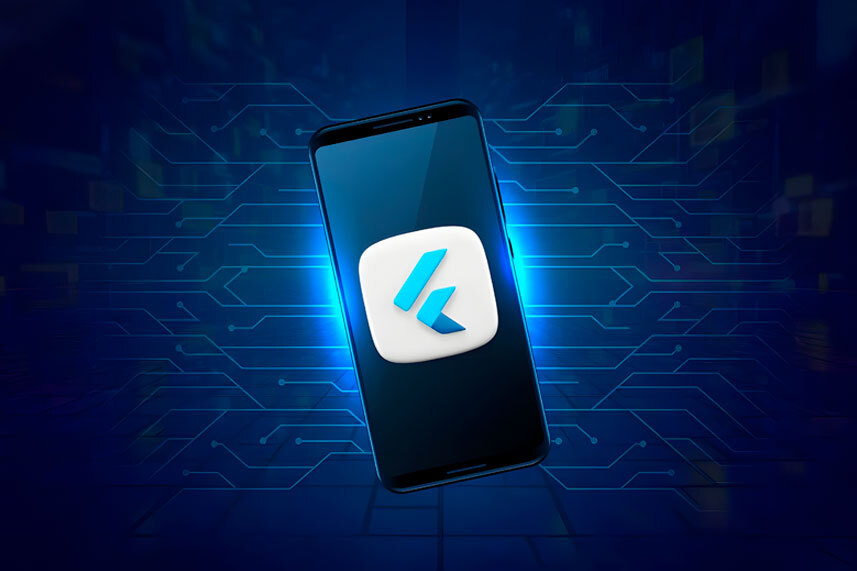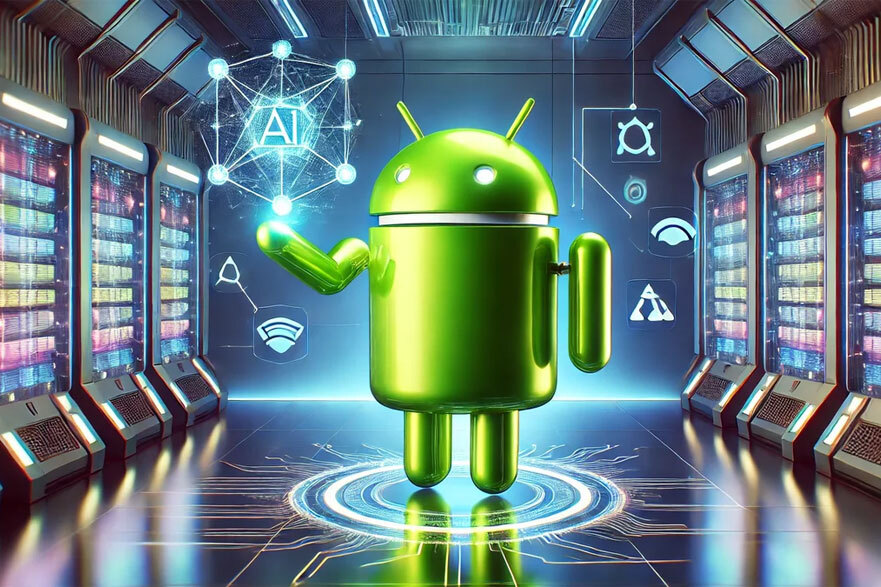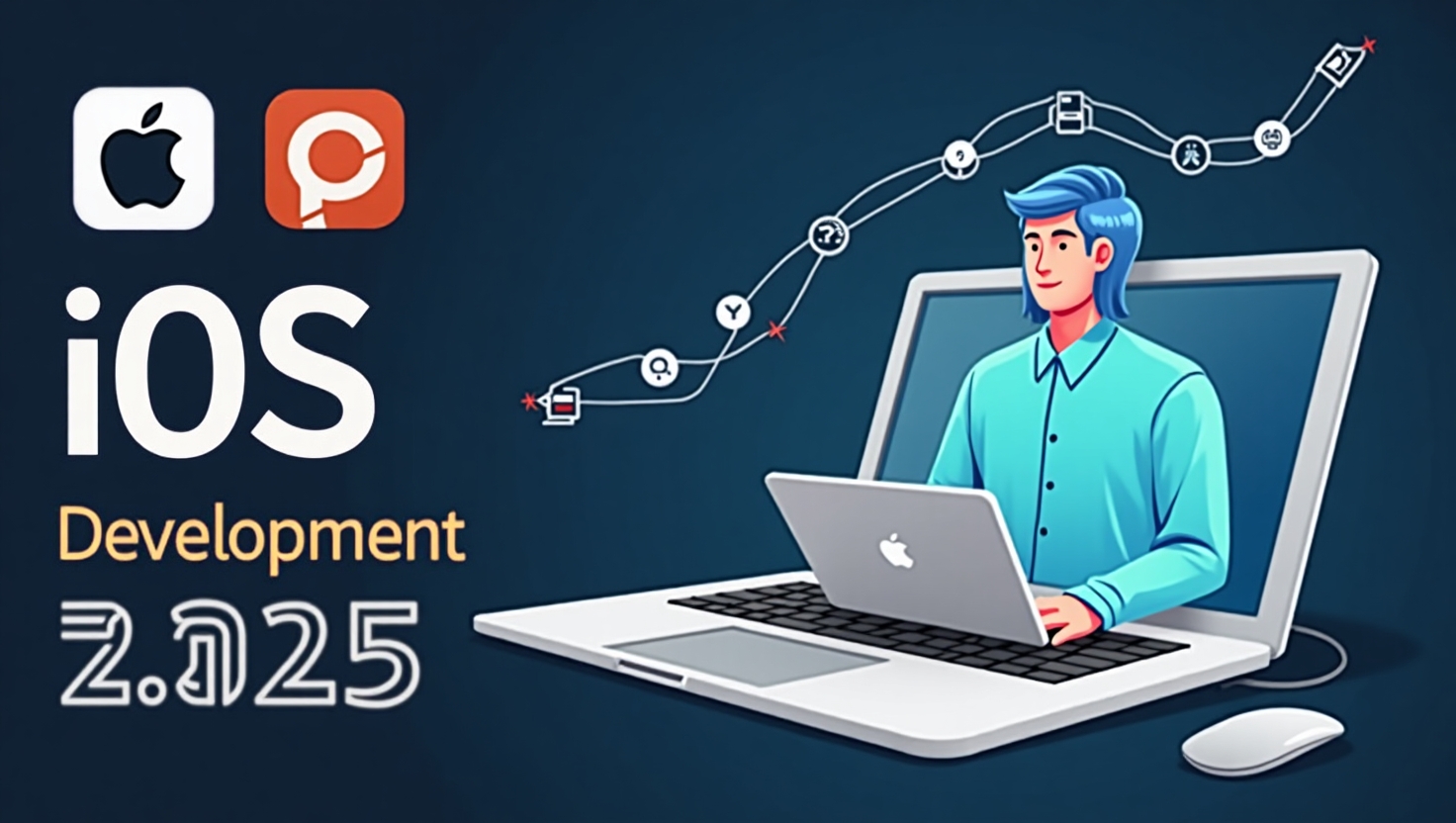Flutter Development: A Complete Developer’s Guide
What’s Flutter All About?
Look, I’ll be straight with you – mobile development was a complete pain in the ass before Flutter came along. You’d spend months building something for iOS, then basically throw it all away and start from scratch for Android. Different languages, different tools, different everything. It was like learning to drive twice just to get from point A to point B.
Then Flutter showed up, and honestly? I was skeptical. Another “revolutionary” framework that promises to solve all our problems? Yeah, right. But here’s the thing – it actually worked. And not just worked, but worked well enough that I’ve been using it for pretty much everything for the past few years.
Flutter is Google’s take on cross-platform development, but it’s not like those other frameworks that barely function outside of demos. You write your app once in Dart (yeah, I know, another language to learn), and it genuinely runs on both iOS and Android. Not in some janky web wrapper that feels like garbage, but actually compiled to native code that performs like native code.
The moment that sold me? Hot reload. You change something, hit save, and boom – it’s right there in your running app. No rebuilding, no waiting for compilation, no losing your place in the app. It’s like having a direct line to your code. Sounds dramatic, but it really changes everything about how you develop.
A Quick Look Back
So Flutter didn’t just magically appear one day. Google’s been working on this since around 2014, probably because their own developers were just as frustrated with the cross-platform mess as the rest of us. They officially announced it in 2017, and my first thought was “Great, another framework I’ll have to learn and then forget about in two years.”
Man, was I wrong about that one. By 2018, they had a stable release, and suddenly big companies were paying attention. Not just startups trying to cut corners – we’re talking Alibaba, BMW, Google themselves. That’s when I realized this wasn’t just another Google experiment that would get killed off.
The really wild part happened in 2019 when they said “Hey, what if this worked on the web too?” Then desktop support showed up, and suddenly we’re not just talking about mobile anymore. We’re talking about one framework that could theoretically run everywhere.
I’ve been around long enough to see plenty of “universal” frameworks crash and burn. But Flutter? It’s actually pulling this off. The evolution from mobile-only to genuinely universal has been pretty impressive to watch.
What Makes Flutter Actually Good
Performance That Doesn’t Suck
Here’s what always drove me crazy about other cross-platform solutions – they were slow. Like, noticeably slow. Users could tell they weren’t using a “real” app, and that’s the kiss of death for mobile.
Flutter sidesteps this whole mess by doing something clever: it doesn’t try to translate to native components or run in a browser. It just draws everything itself. Sounds simple, but it’s actually pretty brilliant. It’s like having a custom graphics engine for your app.
Last year I built this data visualization thing with tons of charts and animations. With React Native or Cordova, I would’ve been sweating bullets about performance. With Flutter? Smooth as butter. Those 60fps animations they promise? They’re not lying.
Everything’s a Widget (And That’s Actually Good)
When I first heard “everything is a widget,” I rolled my eyes so hard I almost pulled something. But after working with it for a while, it actually makes sense. Button? Widget. Padding? Widget. That weird spacing thing you need? Also a widget.
It sounds excessive, but it creates this amazing composability. You’re basically building with digital Lego blocks. Once you get into the groove, you stop thinking about traditional UI components and start thinking in terms of combining widgets. It’s weird at first, but it grows on you.
State Management That Won’t Drive You Insane
State management in mobile apps is usually a nightmare. Flutter gives you options, which is both good and bad. You can go simple with setState() for basic stuff, or get fancy with Provider, Riverpod, or whatever the cool kids are using these days.
Here’s what I learned the hard way on my first Flutter project: start simple. I tried to implement some complex state management pattern from day one and ended up with a mess that would make a spaghetti factory jealous. Now I always start with setState() and only add complexity when I actually need it.
The Plugin Ecosystem (Finally)
One thing that really impressed me about Flutter is how quickly the plugin ecosystem grew. Need camera access? There’s a plugin. Want Firebase integration? Multiple options. Payment processing? You’re covered.
The pub.dev repository went from a handful of packages to over 50,000 in just a few years. Sure, not all of them are production-ready, but the important ones are solid. The community really stepped up here.
Real-World Applications (Where I’ve Actually Used This Stuff)
Healthcare Apps
I worked on a patient monitoring app last year, and honestly, Flutter was perfect for it. We needed real-time data, secure communication, and it had to work on both platforms. Plus, we were integrating with all sorts of medical devices and sensors.
The hot reload feature saved our bacon during development. When you’re working with doctors and nurses, being able to make UI changes on the fly during meetings is huge. Instead of “we’ll fix that and show you next week,” it was “how about this?” and boom, done.
Healthcare apps are tricky because of HIPAA and all the security requirements. Flutter’s compiled nature helped with security, and the ability to handle complex data processing without sending everything to a server was crucial for patient privacy.
Financial Services
Banking apps are no joke. Everything has to be secure, fast, and foolproof. One bug could cost millions. Flutter’s performance characteristics and the fact that it compiles to native code made it suitable for handling thousands of transactions per second.
I’ve seen Flutter apps running real-time fraud detection and risk assessment. The consistent UI across platforms also reduces user confusion, which is important when people are dealing with their money.
The regulatory compliance aspect is huge in finance. Having consistent behavior across platforms makes compliance testing much easier and reduces the risk of platform-specific bugs causing regulatory issues.
E-commerce Platforms
Online shopping apps need to be fast, pretty, and work perfectly on everything. Flutter’s animation capabilities make product browsing feel natural, and the image handling works well for those huge product catalogs.
One project I worked on had AI-powered product recommendations and chatbot integration. Flutter’s ML capabilities made this stuff pretty straightforward to implement, and performance stayed solid even with complex algorithms running in the background.
Education Technology
Educational apps are interesting because they need to be engaging but also functional on older devices. I worked on a language learning app where Flutter’s animation capabilities were essential for keeping users engaged.
The ability to handle rich media content while maintaining smooth performance across different devices was crucial. A kid using a three-year-old Android phone needed the same experience as someone with the latest iPhone.
The Challenges (Because Nothing’s Perfect)
Finding Developers Who Actually Know What They’re Doing
This is probably the biggest headache right now. Flutter is still relatively new, so finding developers with real experience is tough. You’re either training your existing team or hiring juniors and growing their skills.
The good news is that developers with React experience usually pick up Flutter pretty quickly. The concepts are similar, and the documentation is actually decent.
I’ve been hiring Flutter developers for a couple years now, and the market is definitely getting better. More bootcamps are teaching it, and experienced developers are making the jump from native development.
The Learning Curve Is Real
If you’re coming from native development, Dart feels weird at first. It’s not a hard language, but it has its own quirks. The widget-based approach also requires a mental shift from traditional UI development.
I spent my first week constantly looking up widget documentation. Everything felt backwards. But once things clicked, development became much more fluid. Give yourself time to adjust – it’s worth the initial frustration.
Platform-Specific Stuff Still Exists
While Flutter handles most common use cases, you’ll occasionally hit something that requires platform-specific code. This means writing platform channels to talk to native code, which kind of breaks the “write once, run everywhere” promise.
I needed to integrate with a specific iOS security framework that had no Flutter equivalent. Writing the platform channel wasn’t terrible, but it was extra work that I wasn’t expecting.
Privacy and Security Concerns
With all the privacy regulations these days, Flutter developers need to be careful about how they handle sensitive data. Flutter itself doesn’t introduce security vulnerabilities, but the way you implement things can.
I learned this working on that healthcare app. We needed to ensure patient data never left the device unencrypted. Flutter’s secure storage plugins helped, but we had to be really careful about how we handled data in memory.
The good news is that Flutter’s compiled nature provides better security than interpreted frameworks. But you still need to follow security best practices, especially when dealing with user data.
Flutter vs. Everything Else (The Real Comparison)
Compared to Native Development
Native development gives you access to every platform feature immediately, but you’re maintaining two separate codebases. Flutter gets you about 90% of the way there with way less effort.
If you’re building a standard business app, Flutter is probably the better choice. If you’re pushing the limits of what mobile devices can do, you might still need native.
The development speed difference is substantial. I can build a Flutter app in about 60% of the time it takes to build separate native apps. The maintenance is also much easier – one codebase instead of two.
Compared to React Native
Both solve similar problems, but Flutter feels more cohesive. React Native bridges to native components, which can create weird inconsistencies. Flutter renders everything itself, so behavior is more predictable.
Performance-wise, Flutter generally feels smoother, especially for animations and complex UIs. React Native has a bigger ecosystem because of its connection to React, but Flutter’s catching up fast.
I’ve worked with both, and Flutter’s debugging experience is notably better. The widget inspector and hot reload work more reliably than React Native’s equivalent features.
Compared to Web Technologies
Some teams use web tech wrapped in native containers (like Cordova). These solutions are familiar and use existing web skills, but performance usually suffers.
Flutter’s compiled approach provides better performance than web-based solutions while still allowing code sharing. The development experience is also more focused on mobile patterns instead of trying to adapt web concepts.
Compared to Traditional Solutions
Unlike simple automation tools that just execute scripts, Flutter gives you a complete development framework. You’re not just automating existing processes – you’re building entirely new experiences.
The widget-based architecture allows for more flexible and maintainable code compared to traditional approaches. You’re not just patching together existing components; you’re creating something new.
Advanced Performance Stuff (When You Need to Go Deeper)
Understanding How Flutter Actually Works
Flutter’s rendering pipeline is different from native platforms, and understanding it helps you write better-performing apps. It builds a widget tree, then an element tree, then a render tree. Knowing where bottlenecks happen helps you optimize.
I spent a lot of time learning about Flutter’s rendering after hitting performance issues in a complex app. The solution wasn’t obvious until I understood how Flutter actually draws pixels to the screen.
Memory Management (Yes, It Still Matters)
Dart’s garbage collection is generally good, but you can still create memory leaks if you’re not careful. I learned this building an app that processed large amounts of image data. Proper disposal of controllers and streams became crucial.
Widget Optimization Strategies
Not all widgets are created equal. Some are more expensive to rebuild than others. Learning when to use const constructors, when to split widgets into smaller components, and how to use keys effectively can significantly improve performance.
The Flutter team provides excellent tools for performance profiling. The widget inspector and performance overlay have saved me countless hours debugging sluggish animations.
Testing and Quality Assurance (The Boring but Important Stuff)
Unit Testing in Flutter
Flutter’s testing framework is comprehensive and well-designed. Writing unit tests for business logic is straightforward, and the mocking capabilities are decent.
I’ve found Flutter apps are generally easier to test than native apps. The widget-based architecture naturally lends itself to component testing, and hot reload makes test-driven development more practical.
Integration Testing
Flutter’s integration testing lets you test complete user flows across the entire app. This is particularly valuable for cross-platform development since you can verify features work consistently across iOS and Android.
The testing tools have improved a lot over the past few years. Golden tests for UI verification and the new patrol testing framework make it easier to catch visual regressions.
CI/CD Setup
Setting up continuous integration for Flutter projects has gotten much easier. GitHub Actions, GitLab CI, and other platforms now have good Flutter support. Building for multiple platforms from a single codebase simplifies deployment pipelines.
I’ve set up automated testing and deployment for several Flutter projects, and the time savings are substantial. What used to require separate build processes now happens in a single workflow.
Emerging Technologies and Flutter (The Future Stuff)
AI and Machine Learning Integration
Flutter’s TensorFlow Lite integration has opened up some interesting possibilities. I’ve built apps that do image recognition, natural language processing, and predictive analytics directly on the device.
The ability to run ML models offline is particularly valuable for privacy-sensitive applications. Healthcare apps can perform diagnostic analysis without sending patient data to external servers.
AR and Computer Vision
Flutter’s camera plugins and integration with ARCore/ARKit enable AR applications. It’s not as full-featured as native AR frameworks, but it’s sufficient for many use cases.
I worked on a retail app that used AR to let customers visualize furniture in their homes. Flutter’s ability to handle complex graphics made the experience smooth and engaging.
Blockchain and Crypto
The growing interest in blockchain has led to Flutter plugins for cryptocurrency wallets and blockchain interactions. It’s still a niche area, but it’s becoming more accessible.
I’ve seen Flutter apps handling cryptocurrency transactions, NFT marketplaces, and decentralized application interfaces. The framework’s ability to handle complex data structures makes it suitable for blockchain applications.
IoT Integration
Flutter’s ability to communicate with various devices and sensors makes it suitable for IoT applications. I’ve worked on projects controlling smart home devices, monitoring industrial equipment, and collecting sensor data.
The real-time capabilities and cross-platform nature are particularly valuable for IoT dashboards and control applications.
Business Considerations (The Money Talk)
Cost-Benefit Analysis
From a business perspective, Flutter’s main advantage is development efficiency. Building one app instead of two reduces both initial development costs and ongoing maintenance.
I’ve seen companies reduce their mobile development costs by 40-60% by switching to Flutter. The savings come from development time, reduced QA effort, simpler deployment, and unified maintenance.
Time to Market
Flutter’s rapid development cycle can significantly reduce time to market. Hot reload and the comprehensive widget library mean you can iterate quickly and respond to user feedback faster.
In competitive markets, this speed advantage can be crucial. I’ve seen startups launch their MVP months earlier than planned because of Flutter’s development efficiency.
Team Structure and Skills
Flutter allows smaller teams to cover more ground. Instead of separate iOS and Android teams, you can have a single Flutter team handling both platforms. This simplifies project management and reduces coordination overhead.
However, you still need some platform-specific knowledge for app store optimization, platform-specific features, and debugging platform-specific issues.
Getting Started (The Practical Approach)
Setup and First Steps
Installing Flutter is pretty straightforward – download the SDK, set up your IDE, and you’re ready to go. I recommend starting with VS Code if you’re new to Flutter. It’s lightweight and has excellent Flutter support.
Create your first project with flutter create my_app and spend time exploring the default counter app. It’s simple, but it demonstrates key concepts like state management and widget composition.
Learning Resources
The official Flutter documentation is actually good – use it. The Flutter team invested heavily in documentation quality, and it shows. The cookbook section is particularly useful for common tasks.
YouTube has some excellent Flutter channels. I learned a lot from developers sharing real-world experiences, not just theoretical concepts. The Flutter team also produces high-quality video content.
Building Your First Real App
Start with something simple but useful. I always recommend building a personal project – an expense tracker, reading list, or something you’ll actually use. This keeps you motivated and helps you understand how Flutter works in practice.
Don’t worry about making it perfect initially. Focus on understanding widgets, navigation, and basic state management. You can always refactor later.
Advanced Learning Paths
Once you’re comfortable with basics, dive into state management patterns, custom widgets, and platform integration. The Flutter community has created excellent resources for advanced topics.
I recommend contributing to open source Flutter projects once you’re comfortable. It’s a great way to learn from experienced developers and give back to the community.
Essential Tools and Frameworks
Beyond the basic Flutter SDK, get familiar with popular packages like Provider for state management, Dio for HTTP requests, and Hive for local storage. These tools will speed up your development significantly.
The Flutter ecosystem has matured to the point where you rarely need to build everything from scratch. Most common functionality has well-maintained packages available.
Community and Ecosystem (The People Side)
The Flutter Community
One of Flutter’s greatest strengths is its community. The developers are helpful, the documentation is comprehensive, and there’s a real sense of collaboration. Stack Overflow has good Flutter coverage, and the GitHub discussions are active.
I’ve found the Flutter community more welcoming than some other development communities. Whether you’re a beginner or expert, there’s always someone willing to help.
Plugin Development
Creating your own plugins becomes necessary when you need platform-specific functionality that doesn’t exist yet. The process is well-documented, and the community quickly adopts useful plugins.
I’ve published several plugins myself, and the community feedback has been invaluable for improving them. The peer review process through pub.dev helps maintain quality standards.
Contributing to Flutter
The Flutter framework itself is open source, and contributions are welcome. Whether it’s bug fixes, new features, or documentation improvements, there are many ways to contribute.
I’ve contributed to Flutter a few times, and it’s rewarding to see your changes benefit the entire community. The Flutter team is responsive to community feedback and contributions.
The Future of Flutter (Crystal Ball Time)
Where It’s All Heading
Flutter’s roadmap is pretty ambitious. Desktop support is improving rapidly, and web support is becoming more mature. The idea of truly universal applications – mobile, web, desktop from a single codebase – is becoming realistic.
Google’s commitment to Flutter seems strong. They’re using it for major products and investing heavily in development. This isn’t a side project that might get cancelled – it’s core technology for Google’s future.
Emerging Opportunities
AI and machine learning integration keeps getting better. Flutter’s TensorFlow Lite support makes it possible to run ML models directly on devices, opening up new possibilities for intelligent applications.
IoT integration is another growing area. Flutter’s ability to communicate with various devices makes it suitable for smart home applications, industrial monitoring, and other connected scenarios.
Fuchsia and Beyond
Google’s Fuchsia operating system is designed with Flutter as its primary UI framework. While Fuchsia’s future is uncertain, it demonstrates Google’s long-term commitment to Flutter.
The evolution toward becoming a truly universal UI toolkit is exciting. I can see a future where Flutter powers everything from mobile apps to desktop applications to embedded systems.
Ethical Considerations (The Responsible Developer Stuff)
Privacy by Design
With increasing focus on user privacy, Flutter developers need to implement privacy-conscious design from the start. This means minimizing data collection, implementing proper encryption, and being transparent about data usage.
I’ve worked on apps where privacy requirements shaped the entire architecture. Flutter’s ability to perform complex processing on-device helps maintain user privacy while providing rich functionality.
Accessibility
Flutter’s accessibility features are comprehensive, but they require deliberate implementation. Creating apps that work well for users with disabilities isn’t just good practice – it’s often legally required.
The framework provides good tools for accessibility testing, and the community has created helpful resources for implementing inclusive design principles.
Sustainable Development
Consider the environmental impact of your apps. Efficient code that doesn’t drain device batteries unnecessarily is both good for users and better for the environment. Flutter’s performance characteristics can help create more sustainable applications.
Final Thoughts (The Real Talk)
Flutter isn’t perfect, but it’s the best cross-platform solution I’ve used. The development experience is smooth, performance is solid, and the ecosystem is growing rapidly. If you’re considering cross-platform development, Flutter deserves serious consideration.
The framework is maturing quickly, and the community is helpful and active. Whether you’re a startup trying to maximize limited resources or an established company wanting to streamline development, Flutter offers real advantages.
My advice? Just try it. Build something small but real. You’ll quickly understand whether Flutter fits your needs and development style. In my experience, most developers who give Flutter a fair chance end up adopting it for their projects.
The cross-platform development landscape is competitive, but Flutter has established itself as a serious contender. It’s not just hype – it’s a practical solution that delivers on its promises. For many projects, it’s become my default choice, and I suspect it’ll become yours too.
The future of mobile development is multi-platform, and Flutter is positioned to be a major player in that future. The combination of performance, developer experience, and business value makes it a compelling choice for teams of all sizes.
Whether you’re building the next big social media app, a complex enterprise solution, or a simple utility app, Flutter provides the tools and flexibility to bring your vision to life. The learning curve is manageable, the community is supportive, and the results speak for themselves.
Flutter represents more than just another development framework – it’s a shift toward more efficient, sustainable, and inclusive app development. As the ecosystem continues to mature and new capabilities emerge, Flutter’s role in the future of software development will only get stronger.
So yeah, that’s my take on Flutter. It’s not perfect, but it’s pretty damn good. Give it a shot – you might be surprised at what you can build.








